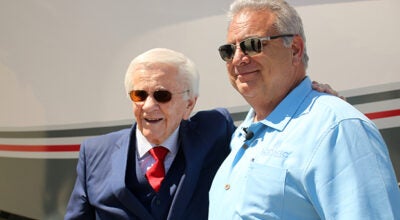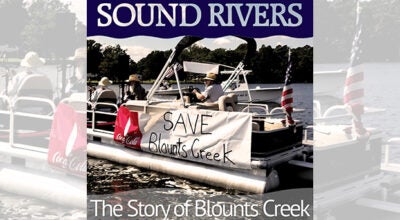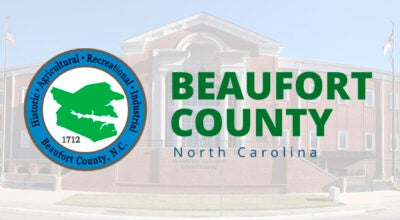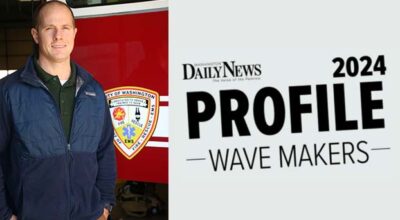Commission to discuss fate of fences
Published 11:14 pm Saturday, August 29, 2015
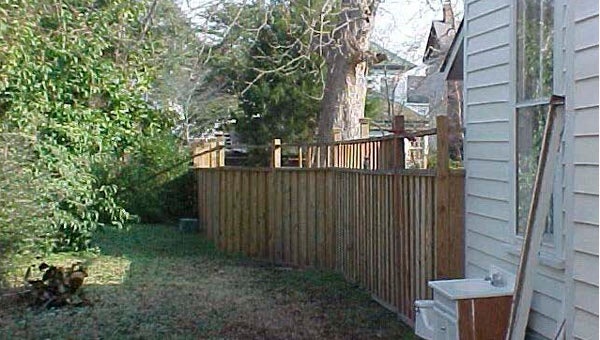
CITY OF WASHINGTON
ITEM OF CONCERN: Privacy-fence guidelines are on the agenda for the Historic Preservation Commission’s meeting Tuesday.
The future of privacy fences — and other fences, too — in Washington’s downtown historic district is scheduled to be discussed during the Historic Preservation Commission’s meeting Tuesday.
Currently, privacy fences are allowed in the historic district, but in recent years some people have questioned if the existing rules governing their construction should be modified.
Dee Congleton, chairwoman of the committee studying fence issues for the city, said several options pertaining to privacy fences would be presented and discussed during the meeting. Those options include reducing the height of a privacy fence from 6 feet to five feet, requiring a 1-inch space between the boards of a privacy fence, requiring the exterior of a privacy fence to be painted and possibly banning privacy fences. The committee includes two members of the Historic Preservation Commission. The committee has been meeting since April.
“There’s a lot of improvement that can be made because right now with the 6-foot-high privacy fences, it’s beginning to look like little boxed-in areas, particularly in the eastern historic district. For some reason, you don’t see that on West Main or West Second. We can’t figure out why,” Congleton said.
Committee members obtained information regarding privacy fences and other types of fences from places such as New Bern, Edenton, Statesville and several states, Congleton said. While New Bern and Edenton allow privacy fences, states such as Maine, New Hampshire and Vermont don’t allow them, she noted. Some places that allow privacy fences permit them to be 6 feet high, with most of those places indicating they prefer picket-style fences, Congleton said.
Before 2009, according to Congleton, there were no regulations concerning fences in the historic district.
“Back in 2009, when Michael Overton was chairman of the Historic (Preservation) Commission, he formed a fence committee, and there were several people on it at the time. Before that, there hadn’t been any kind of regulation concerning fences — none whatsoever,” Congleton said. “So you could put up almost any kind of fence anywhere, almost any way.”
Congleton said the erection of a 6-foot-tall privacy fence between a property on the waterfront and a property on East Main Street brought attention to the privacy fence issue. The property owner on Water Street voice concern that the privacy fence blocked her view to the east.
“There was really nothing that could be done about it, whatsoever,” Congleton said. “We know that would probably, if you wanted to sell your home, the price you would get if you had a particular view that was blocked by this 6-foot-high fence.”
Congleton said that incident resulted in the 2009 committee developing “some, excellent at the time, guidelines.”
“Since that time, we’ve discovered that more and more of these fences, called privacy fences, are going up. … So, we felt the need had arrived to address privacy fences again. Not just privacy fences, but all fences,” she said.
The committee recommends that privacy fences be no higher than 5 feet. Although the committee prefers the picket-fence style for a privacy fence, other styles would be acceptable, Congleton said. The committee recommends that the boards on a picket-style privacy fence be 1 inch apart, not adjoining one another, she noted.
Not all privacy fences, if allowed, would have to be made of wood, Congleton noted. “Of course, we looked at all kinds of fences, even for the front yard, like the aluminum, black fence surrounding Harding Square because that’s appropriate for some houses,” she said.
Brandia D. Dixon, in an email, provided her stand on privacy fences and other issues.
“If the privacy fences are beautifully styled, they shouldn’t be a problem,” she wrote. “The concerns are understandable, but the issue is superficial compared to the real threat to the historic district — mold. In introducing condensating HVAC systems and air-tight insulation to homes that were built to condition themselves with fresh air, then leaving the homes vacant or unmaintained, many of them have become Petri dishes for mold that can only be successfully removed by gutting and rebuilding their historic interiors.”
Linda C. Clark wrote: “I hope cooler heads will have the wisdom and the foresight to preserve what remains of the general public’s view of the Pamlico. The National Mall in front of the Capitol Building reflects what Washington DC and the U S government is all about. It’s America’s front lawn. It is for the people. The Washington Waterfront must be preserved for the people first and foremost.”
Information about the fence guidelines may be viewed by visiting http://www.washingtonnc.gov/…/media/pdf/whpc/whpc-9115.pdf
The Historic Preservation Commission meets at 7 p.m. Tuesday in the Chamber Council of the Municipal Building, 102 E Second St.



